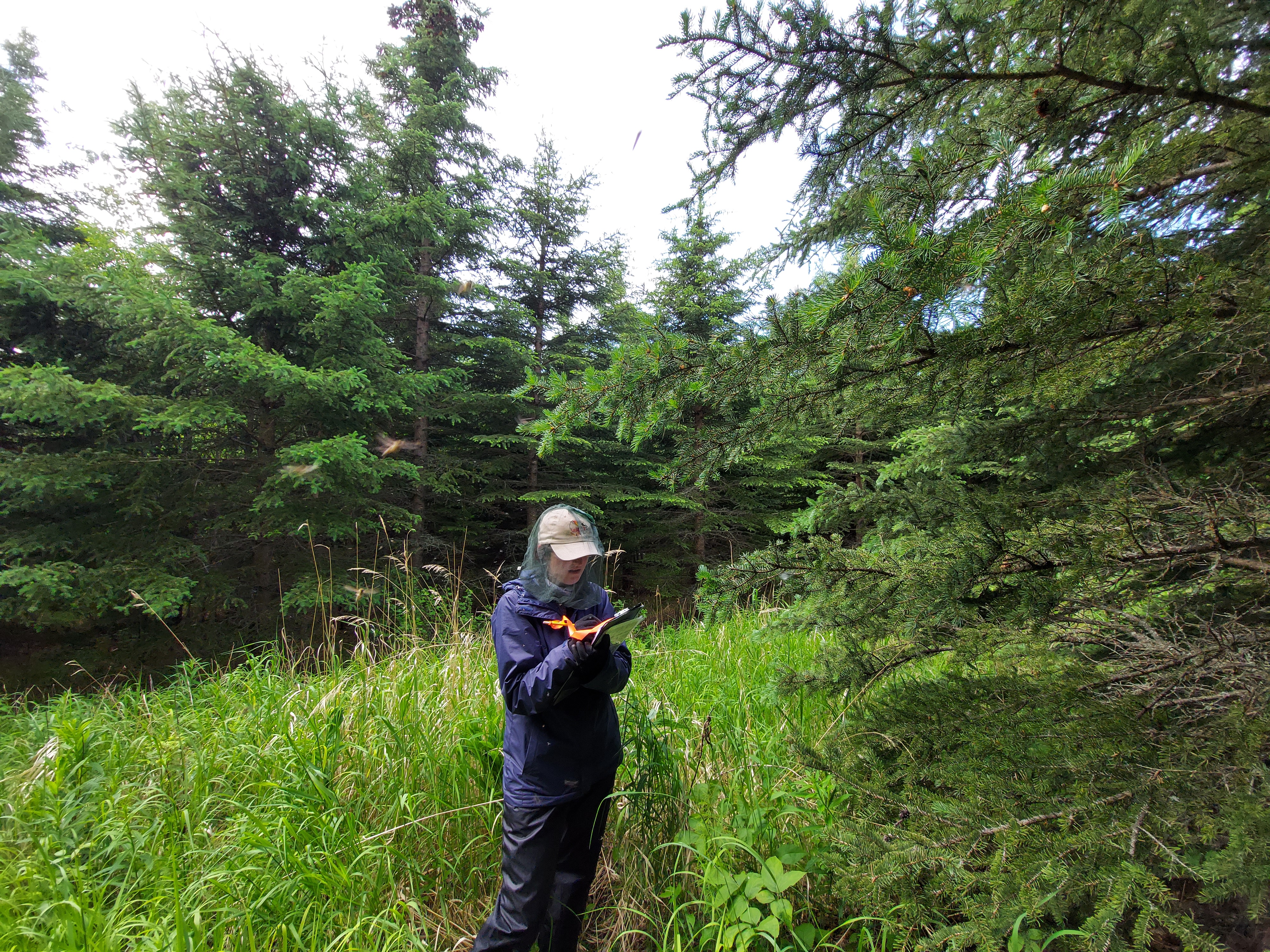In 2018, the Lesser Slave Lake Bird Observatory was contracted by Vanderwell Contractors (1971) Ltd. to survey logged forests and to determine how breeding bird communities change alongside the forest as it regenerates. The boreal forest is a mosaic of different forest types and ages that are created by natural and human disturbances. When large trees are removed through logging or forest fires, plant life changes dramatically as moss beneath old trees is replaced by grass and shrubs. As a result, the bird species found in these forests can be night and day and continues to shift as the forest regrows in a process called succession.

Above: Cory Cardinal completing a habitat survey at a point located in a recently harvested forest.
Breeding bird surveys are often done through point counts. Here, surveyors traveled to specific locations around Slave Lake between sunrise and 10 AM when birds are most active. At these sites, they recorded all birds seen or heard within 5-minutes and briefly described the surrounding habitat. These surveys can inform managers about bird communities found in different stand ages and forest types throughout the managed area and help guide decisions to maintain bird diversity across the entire landscape.
Each year, we were to sample at 120 predetermined point count locations. Due to flooding and reduced site access, sampling was curtailed in 2018 with only 53 sites surveyed. Forest fires cancelled surveys entirely in 2019. In 2020, we saw the first good year and sampling was completed at 125 sites. With only one stormy period, no interfering forest fires, and resilient field staff, a phenomenal 196 sites were surveyed in 2021, bringing the sampling for this project to a close!

Above: Bronwyn Robinson attempting to hear singing birds over the constant hum of mosquitoes while completing a point count in a more mature post-harvest forest.
Although we must wait until the winter for the final report, our field staff have already noticed differences in bird communities as a forest regenerates from a grassy field with small saplings just after logging to a medium-sized spruce forest so dense that travel becomes difficult 20-30 years after harvest. Yet some studies investigating how bird communities change in response to forestry activities lump their samples of forests younger than 30 years post-harvest into a single category and are unable to describe these changes. We are excited to delve deeper into the successional stories these young, harvested forests have to tell.
Meanwhile, we have also been balancing our annual MAPS program, which focuses on banding birds on the breeding grounds to estimate how many birds survive their two-way migrations and how many young they produce. However, we have had to postpone our next round of this program since it is unsafe to band birds if it is over 27 degrees Celsius – a situation that we very rarely find ourselves in since this program begins at sunrise and wraps up 6 hours later before the true heat of the day.
By Robyn Perkins
LSLBO Bander-in-Charge
